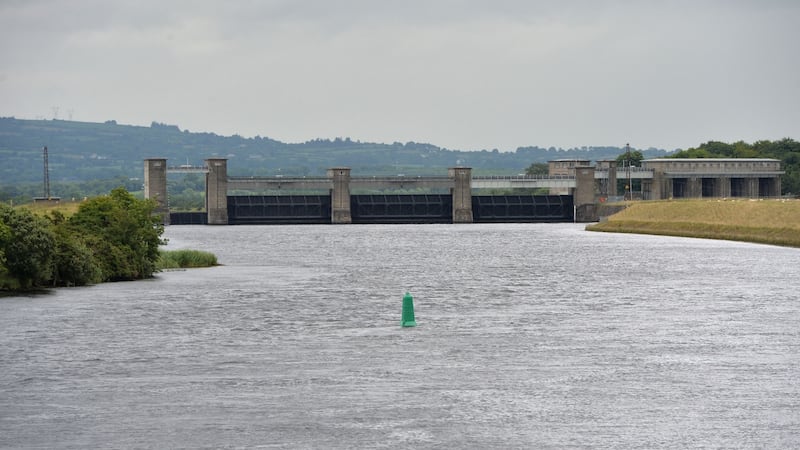A consultant obstetrician "very strongly" agreed that she would have induced Sally Rowlette at 38 weeks instead of letting her go full term, at an inquest into the 36 year old Sligo woman's death.
Dr Heather Langan was the consultant obstetrician on call when Ms Rowlette was admitted to Sligo Regional hospital in the early hours of February 4th last year. She insisted she and the patient did discuss Ms Rowlette’s previous history of HELLP syndrome that night.
“Sally herself asked if she had HELLP syndrome as had occurred following her second pregnancy and she recalled that I had provided care to her at the time”. She said she had a “very very clear ” memory of the conversation .

Ms Rowlette from Dromore West, Co Sligo, died at the hospital on February 5th, 2013, following the birth of her fourth child.
A post mortem showed she suffered a massive brain haemorhorage and swelling of the brain associated with HELLP syndrome.
Sean Rowlette has disputed Dr Langan's account, saying his wife was too weak to even hold a conversation with him about the baby's name, never mind discuss medical matters with the obstetrician that night.
Mr Rowlette said neither he nor his wife knew what HELLP syndrome was.
The jury was told that there was no evidence that Ms Rowlette had been counselled about the risks associated with her previous history of HELLP syndrome.
They also heard there was no reference in the hospital’s computerised records to Ms Rowlette’s history of HELLP in 2007, but there was a “hand written” note relating to it.
Dr Langan said following a review into Ms Rowlette’s death, a new practice was introduced whereby women who had HELLP syndrome could meet a consultant six to eight weeks after delivery “when the dust settled” to discuss the risks.
Dr Langan confirmed Ms Rowlette’s obstetrician Dr Murshid Ismail had resigned suddenly in September 2013, handing in his notice in the middle of his two-week holiday, which was unusual.
The coroner, Eamon MacGowan, has told the jury he has not been able to contact Dr Ismail. The jury was told there had been rumours he was in Saudi Arabia.
Dr Langan, who delivered Ms Rowlette’s baby at 2.44am, said blood results after delivery were in keeping with severe pre-eclampsia with possible progression to HELLP syndrome and because of that she was taken to ICU.
She said that when met Sean Rowlette at around 4.15am, she told him that his wife needed to rest and recover and that perhaps he too should go home and get some rest as his wife would need a lot of help the following day.
Dr Langan remembered telling him that his wife was now stable but was “not out of the woods”.
She denied Mr Rowlette’s assertion that there was a “general air of relaxation” after the birth.
Dr Langan said at 6.20am, Ms Rowlette was agitated, confused and unable to communicate verbally, with reduced movement on her right side. Her blood pressure had increased further. She believed Ms Rowlette had a stroke.
She met Mr Rowlette about 7am and told him of the deterioration and advised him that his wife might not survive and that other family members should be called.
She discussed the urgent need for a CT scan of the brain, chest and abdomen with a radiologist at about 7.50am.
“In view of the sudden deterioration in Sally’s condition we could not rule out a pulmonary embolism or rupture of liver, secondary to her raised liver function tests,” she said.
Consultant anaesthetist Seamus Crowley, who came on duty at 8.30 am, agreed that if he had come on duty in the ICU two hours earlier he would have requested a CT scan urgently.
The jury was told that between 3.10am and 7.45am, Ms Rowlette was seen only once by a consultant.
Damien Tansey, solicitor for the Rowlette family, suggested that had “effective action” been taken at 6.30am and Sally been given a CT scan earlier, Beaumont Hospital might have requested that she be transferred there.
“Sally Rowlette lost the opportunity of having a life,” said Mr Tansey.
Dr Crowley agreed that Ms Rowlette’s condition was so serious when he came on duty that she “stood out”.
Questioned about the length of time it took to administer an agent to bring down her blood pressure, he agreed it would not have taken him 40 minutes to do so.
Mr Tansey put it to him that it had been absolutely essential that her blood pressure be brought under control and it was “an indictment of the system” that this did not happen.
Mr Conor Halpin SC for the hospital objected, saying he was not entitled to indict the system at the inquest.
The inquest continues.















